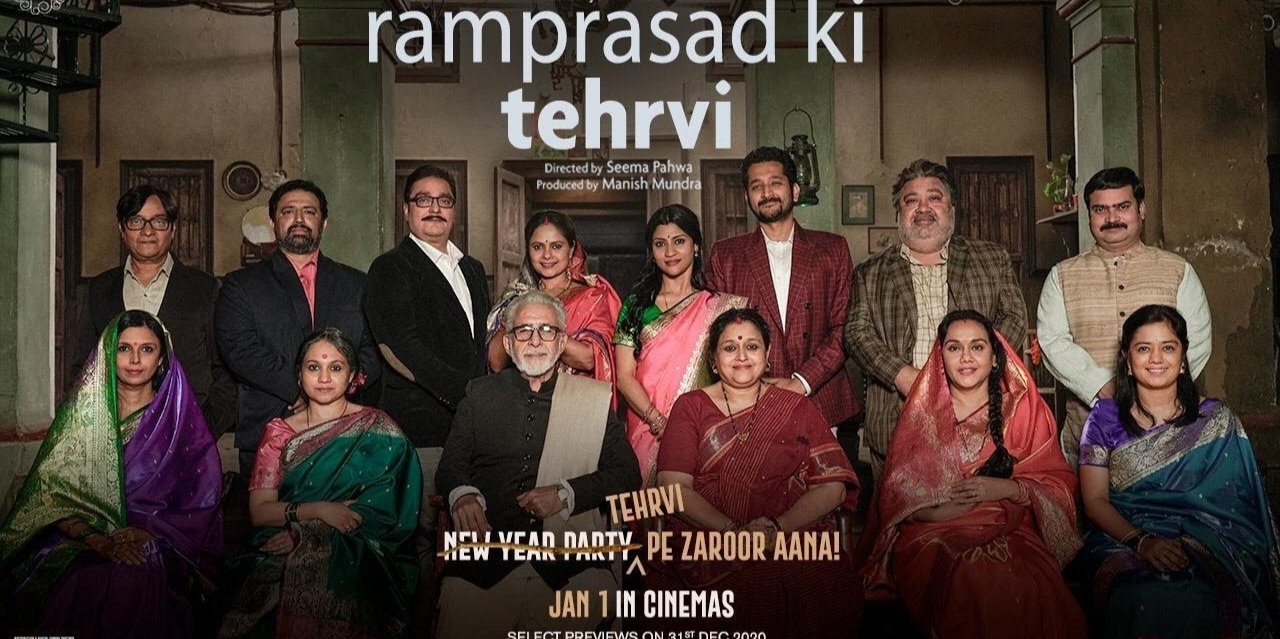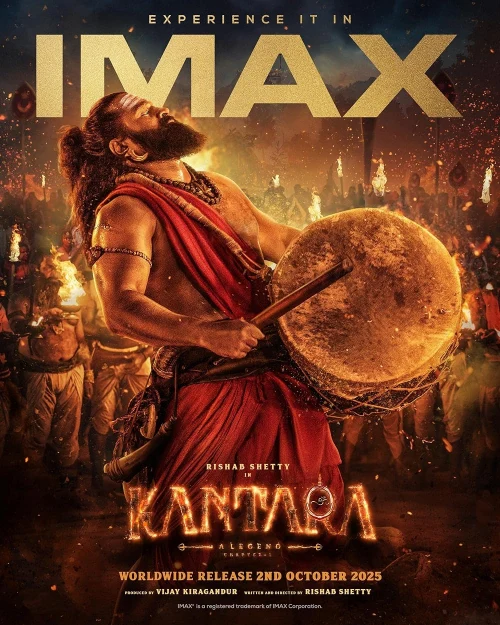Ramprasad Ki Tehrvi Movie Review – Cast, Story, Acting
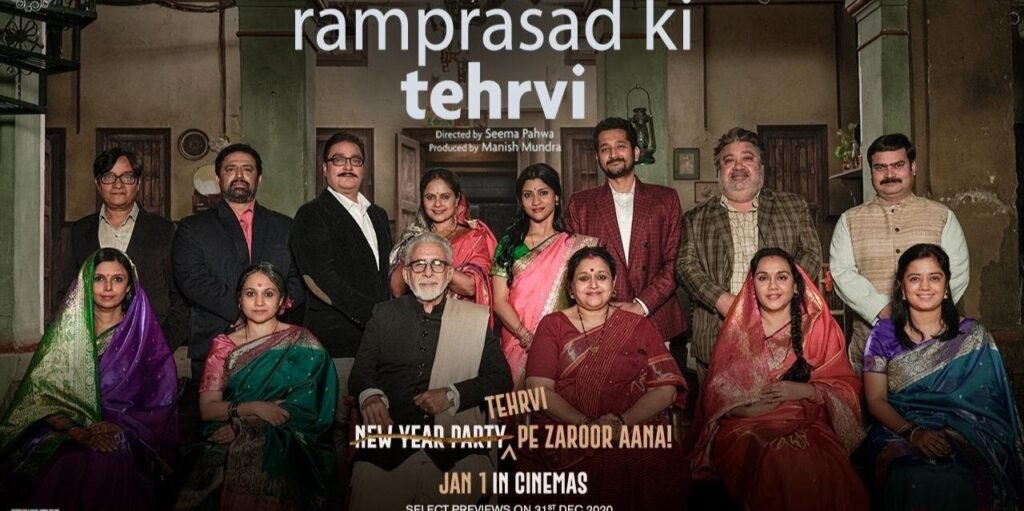
🎬 Table of Contents of Ramprasad Ki Tehrvi movie
- Story and Plot Summary (Non-spoiler + Spoiler parts)
- Cast and Characters
- Music and Soundtrack (Composer, Songs, Lyrics, Reception)
- Performances and Acting Reviews
- Dialogues and Writing Style
- Release and Promotion Strategy
- Box Office and OTT Streaming Performance
- Critical and Public Reception
- Cultural Impact and Public Response
- Comparisons with Similar Movies
- Awards and Recognition
- Conclusion and Final Thoughts
1. Story and Plot Summary 📖 | Ramprasad Ki Tehrvi movie
🟢 Non-Spoiler Summary
Ramprasad Ki Tehrvi is a poignant family drama directed by Seema Pahwa, known for her rich background in theatre and acting. This film revolves around the aftermath of a patriarch’s death and how his extended family navigates the rituals of mourning, emotions, and longstanding grudges during the traditional 13-day tehrvi (mourning period) in a North Indian household.
The story is set in Lucknow, inside a house that has seen generations, laughter, and arguments. As family members arrive to pay their respects to the late Ramprasad, what unfolds is a layered narrative full of hidden tensions, subtle humor, unspoken pain, and deeply rooted cultural nuances.
Despite its melancholic setting, the film is filled with realism and touches of irony. The tension between tradition and modernity, duty and desire, and appearance versus reality becomes the emotional backbone of the story. It is less about mourning the dead and more about understanding the living.
🔴 Spoiler Summary of Ramprasad Ki Tehrvi movie
The story begins with the sudden death of Ramprasad, a school teacher and patriarch of a large family. His widow, Amma, is left to manage not just her own grief, but also the arrival of her six children and their families. What begins as a mourning gathering soon reveals the emotional fractures between siblings.
Each child has a different view of their father and his legacy. Some are respectful, some indifferent, and some even resentful. Conflicts arise over property, finances, and personal choices. As the days pass, subtle conversations and family dynamics unfold that show how disconnected the siblings have become.
Amma’s struggle is central—she watches as her children quarrel over practical matters, completely losing sight of emotional support. In the end, a letter written by Ramprasad reveals his understanding of the fractured relationships and his desire for unity among his children.
The film closes with the tehrvi ceremony, where instead of coming together, the family disperses once again—each member going back to their routine, leaving Amma with more silence than ever. The movie captures the irony of life and death beautifully.
2. Cast and Characters 🎭 | Ramprasad Ki Tehrvi movie
Ramprasad Ki Tehrvi boasts a rich ensemble cast, each actor bringing authenticity to their role. The casting is one of the film’s strongest points, creating a believable family dynamic.
✨ Naseeruddin Shah as Ramprasad
Though his screen time is limited, Naseeruddin Shah’s presence looms large throughout the film. As the patriarch, Ramprasad is the invisible force holding the family together, even in death. His philosophies and decisions echo through the actions of his children.
✨ Supriya Pathak as Amma (Ramprasad’s Wife)
Supriya Pathak delivers a touching performance as Amma. Her character is a pillar of quiet strength, navigating sorrow while managing the chaotic energy of a house full of children and relatives. Her silence often speaks louder than words.
✨ Manoj Pahwa as Gajraj (Eldest Son)
Manoj Pahwa adds emotional depth as the eldest son who feels burdened with responsibilities. His internal struggle between duty and personal identity is portrayed with subtle brilliance.
✨ Vinay Pathak, Ninad Kamat, Parambrata Chattopadhyay, Vikrant Massey
Each brother represents a different personality and worldview. Vinay Pathak’s dry wit, Ninad Kamat’s seriousness, Parambrata’s sensitivity, and Vikrant Massey’s youthful defiance make the family structure vivid and real.
✨ Konkona Sen Sharma as Seema (Daughter-in-law)
Konkona stands out in a role layered with understanding and restraint. She adds an observational dimension to the family chaos, often commenting without judging.
🎯 Supporting Cast
Tanuja, Brijendra Kala, Divya Jagdale, Deepika Amin, and others contribute significantly to the ensemble. Each character, no matter how small, has a purpose and a voice.
3. Music and Soundtrack 🎼 | Ramprasad Ki Tehrvi movie
The music of Ramprasad Ki Tehrvi is understated, perfectly suiting the film’s grounded narrative. Composed by Sagar Desai, the soundtrack leans heavily on background score rather than conventional songs.
🎵 Background Score
Sagar Desai uses traditional Indian classical motifs and soft percussions to create the tone of an Indian household in mourning. The music never overwhelms scenes; instead, it quietly complements them.
🎵 Title Theme
The title theme is a minimalistic blend of strings and tabla, evoking a bittersweet nostalgia. It plays repeatedly through transitions, helping maintain emotional continuity across family confrontations.
🎵 Use of Silence
Interestingly, silence is used as a powerful tool in the soundtrack. The absence of music in certain scenes heightens discomfort, tension, or grief—particularly when Amma is alone or the family faces awkward silences.
🎵 Reception
Critics appreciated the music’s subtlety. It doesn’t aim for chart-topping popularity but serves the story with grace. Many viewers connected with the haunting tones that underlined family dysfunction.
4. Performances and Acting Reviews 🎥 | Ramprasad Ki Tehrvi movie
The performances in Ramprasad Ki Tehrvi elevate the script to something intimate and real. Each actor embodies the unspoken emotions of a family reeling from loss and miscommunication.
🌟 Supriya Pathak
She is the emotional anchor of the film. Her quiet pain, composed face, and internal conflict are deeply affecting. She doesn’t raise her voice, but her presence dominates every scene she’s in.
🌟 Naseeruddin Shah
Though mostly featured in flashbacks, his performance is rich with wisdom and understated authority. Shah gives Ramprasad a gentle nobility that adds layers to the film’s emotional message.
🌟 Manoj Pahwa
His portrayal of a responsible yet emotionally neglected son stands out. The way he balances frustration with affection makes his character relatable to many from joint families.
🌟 Konkona Sen Sharma
Konkona brings nuance and clarity. She reflects the outsider’s perspective in a traditional setup and grounds the narrative in realism.
🌟 Ensemble Dynamics
The cast chemistry is exceptional. Everyone feels like a real member of an extended North Indian family—bickering, gossiping, hiding truths, and reminiscing.
5. Dialogues and Writing Style ✍️ | Ramprasad Ki Tehrvi movie
Seema Pahwa’s writing is grounded, deeply observational, and reflective of North Indian middle-class families. The dialogues blend humor, emotion, and sarcasm with precision.
💬 Authentic Conversations
The film uses everyday speech patterns. Characters speak over one another, get distracted, and circle back to conversations—just like in real family settings. This makes the film incredibly natural and relatable.
💬 Understated Humor
The humor is subtle. It doesn’t rely on punchlines but emerges from awkwardness, irony, and familial misunderstandings. For example, arguments over electricity bills or sharing blankets feel authentic and funny.
💬 Powerful Silences
One of the strongest writing tools in the film is silence. When Amma sits alone, or when siblings refuse to respond, the pauses are loaded with more meaning than words.
💬 Character Depth
Each character gets at least one strong monologue or moment of vulnerability. These are not loud breakdowns but quiet, well-written outbursts or confessions that show emotional strain.
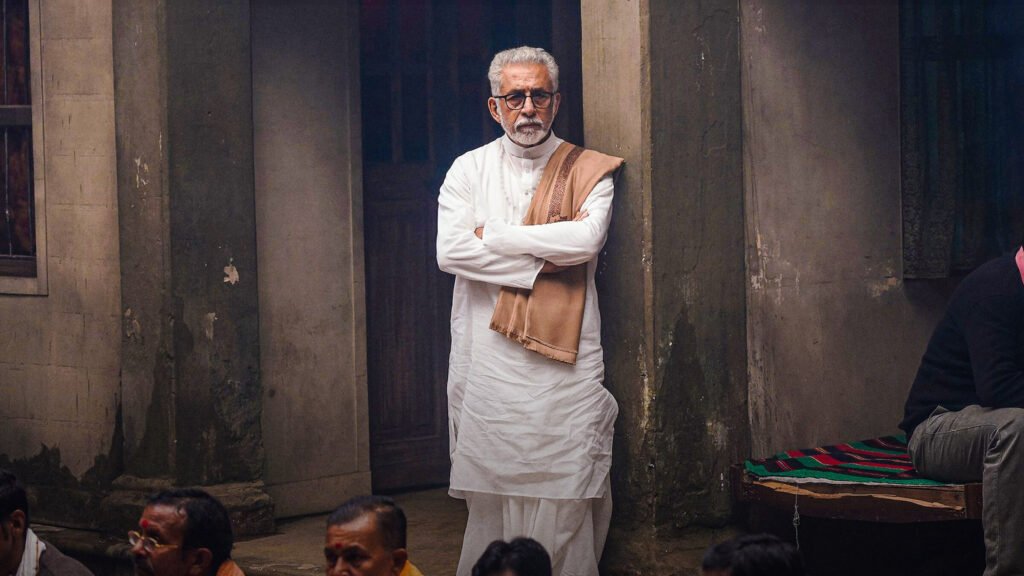
6. Release and Promotion Strategy 📰 | Ramprasad Ki Tehrvi movie
Ramprasad Ki Tehrvi followed a non-traditional release model. Its journey from film festival screenings to theatrical and OTT release was modest but strategically planned.
📅 Festival Debut
The film premiered at the MAMI Mumbai Film Festival in 2019 and received critical acclaim. This early recognition gave it a prestigious start and piqued interest among cinephiles and critics.
🎯 Theatrical Release
It was released theatrically on 1 January 2021, right after pandemic-related cinema closures. This timing affected its box office potential but also offered little competition, giving it a chance to stand out.
📢 Promotions
Promotion was limited but meaningful. The cast appeared on talk shows and gave interviews highlighting the importance of family bonding. Posters focused on ensemble cast rather than a central figure, reinforcing the film’s theme.
📲 Word-of-Mouth Campaign
The film relied heavily on word-of-mouth. Many people recommended it on social media as an “honest” and “relatable” family film. Its emotional appeal worked better with mature audiences.
7. Box Office and OTT Streaming Performance 💰 | Ramprasad Ki Tehrvi movie
Given its intimate subject and timing, the box office performance of Ramprasad Ki Tehrvi was modest. However, its real success came through digital streaming.
🎟️ Box Office Collection
Released with minimal fanfare and limited screens, the film didn’t make huge numbers. However, for a niche indie film, it was not a commercial failure. It covered a part of its budget through theatrical revenue, mainly in urban centres.
📺 OTT Performance of Ramprasad Ki Tehrvi movie
The movie gained a second life when it began streaming on Netflix. There, it found its core audience—viewers who enjoy realistic, layered storytelling. Social media buzz helped boost its popularity over time.
💡 Streaming Stats (Unofficial)
While no official numbers were released, the film trended for several days post-release. It also ranked among the “top 10 family dramas” in India for a brief period.
🧾 Budget and Recovery
With a relatively low production budget, the film managed to recover costs through a combination of box office, festival grants, and streaming rights. It proved that quality storytelling can still be sustainable in cinema.
8. Critical and Public Reception 🌟 | Ramprasad Ki Tehrvi movie
Ramprasad Ki Tehrvi was widely praised by critics for its authenticity and emotional depth. Audiences too found the film moving and insightful, especially those from joint family backgrounds.
🗞️ Critical Response to Ramprasad Ki Tehrvi movie
Most critics highlighted the strong ensemble cast and realistic portrayal of Indian family structures. Seema Pahwa was praised for her assured directorial debut and understanding of character dynamics.
- The Hindu called it “a rare film that understands the pulse of Indian households.”
- Film Companion appreciated its “emotional honesty and restrained storytelling.”
- The Indian Express termed it “a touching meditation on life, death, and family.”
👥 Public Opinion
Audiences connected deeply with the film’s portrayal of family politics. Many viewers shared their own experiences on social media, stating the film “felt too real.” Elderly viewers especially appreciated the emotional authenticity.
🏆 Key Takeaways from Viewers
- Subtle storytelling works when characters are rooted in reality.
- Middle-class experiences and rituals are rarely shown with such depth.
- Films like this start conversations that linger long after watching.
kiara Here’s the continuation of your full-length article on Ramprasad Ki Tehrvi movie, covering Sections 9 to 12 in the same tone and format:
9. Cultural Impact and Public Response 🌍 | Ramprasad Ki Tehrvi movie
Ramprasad Ki Tehrvi left a quiet but meaningful imprint on Indian cinema and society. The film explored a theme rarely handled with such nuance—death as a catalyst for family reflection. Its cultural value lies in the way it mirrored the traditional Indian joint family setup, now increasingly rare.
🏡 Reflection of Indian Traditions
The 13-day mourning period (tehrvi) is a deeply rooted custom in North Indian Hindu families. The film presents this not as a ritual checklist but as a psychological process—where people not only remember the deceased but confront long-buried feelings.
It reminded audiences of how Indian families function—both in unity and dysfunction. The casual fights, passive-aggressive conversations, and generational gaps felt true to life. It opened a cultural conversation about how death often exposes a family’s real nature.
💬 Conversations Triggered
Many viewers, especially middle-aged audiences, reflected on how they had seen similar family behavior after the death of a loved one. The film inspired social media posts, family discussions, and even blog essays about how modern families are drifting apart.
Topics such as:
- How rituals are sometimes performed more for obligation than belief.
- How grief is deeply personal but rarely allowed space in large families.
- How emotional inheritance can be more complicated than property disputes.
🎭 Theatre to Cinema Bridge
Since Seema Pahwa is rooted in theatre, the movie carried that sensibility. For cultural enthusiasts, it bridged the art of stage realism with cinema, offering a rich blend of acting depth and visual authenticity.
🌐 Impact on Digital Culture
Memes and dialogues from the movie circulated online in subtle ways, especially among cinema lovers and family drama fans. Quotes like “sabko sirf apni padhi hai” became shorthand for describing selfish family dynamics.
10. Comparisons with Similar Movies 🎞️ | Ramprasad Ki Tehrvi movie
The theme of family reunions after death or crisis has been explored in several Indian films. However, Ramprasad Ki Tehrvi stands apart for its grounded approach, lack of melodrama, and strong character studies.
🎬 Kapoor & Sons (2016)
This film also focuses on a dysfunctional family gathering after a grandfather’s health crisis. It uses a more modern, stylized approach, while Ramprasad Ki Tehrvi is rooted in small-town realism and tradition.
- Similarities: Sibling rivalry, property disputes, emotional baggage.
- Differences: Kapoor & Sons leans more into glamour and youth-centric storytelling, while Tehrvi is mature, subtle, and quiet.
🎬 Pagglait (2021)
Both films share a funeral as the setting and explore grief in unconventional ways. Pagglait focuses more on an individual’s transformation post-death, while Ramprasad Ki Tehrvi focuses on collective family dynamics.
- Pagglait is more quirky, modern, and feminist.
- Tehrvi is more traditional, ensemble-based, and emotionally layered.
🎬 Monsoon Wedding (2001)
Although not about death, Mira Nair’s Monsoon Wedding also gathers a family under one roof, revealing cracks beneath the surface. The tone is livelier and global, while Tehrvi is intimate and domestic.
11. Awards and Recognition 🏆 | Ramprasad Ki Tehrvi movie
While Ramprasad Ki Tehrvi did not make waves in mainstream award circuits, it was acknowledged in film festivals and critically lauded for its content and performances.
🥇 Festival Recognition
- MAMI Mumbai Film Festival (2019): Received warm reviews and audience applause at its premiere.
- Pune International Film Festival: Screened in the Indian competition section.
- International Film Festival of India (IFFI): Shortlisted for Indian Panorama.
🏆 Nominations
- Filmfare Critics Awards 2021:
- Best Debut Director (Seema Pahwa) – Nominated
- Best Ensemble Cast – Recognized in critics’ mentions
- Screen Awards:
- Special Jury Mentions for Supriya Pathak and Manoj Pahwa’s performances
🎖️ Critical Acknowledgements
Though mainstream awards didn’t fully embrace the film, several critics listed it among the Top 10 Underrated Films of 2021.
Its biggest recognition came from the viewers—especially theatre lovers, film students, and those from traditional families who saw themselves reflected on screen.
12. Conclusion and Final Thoughts 🎬 | Ramprasad Ki Tehrvi movie
Ramprasad Ki Tehrvi is a heartfelt film that does not scream for attention but earns your respect quietly. It’s a story of loss—but more importantly, it is about the living: their baggage, their egos, their love, and their failings.
Seema Pahwa’s direction shows how restraint can be more powerful than extravagance. Her choice to explore grief not as melodrama but as a mirror into human behavior is rare in Indian cinema.
The movie is deeply personal for anyone who has dealt with the death of a loved one in a joint family. Its portrayal of ritual, guilt, detachment, and subtle selfishness feels universal yet Indian at its core.
It may not be a film for everyone—especially those looking for entertainment or fast-paced drama. But for those who love cinema that captures life in its truest form, Ramprasad Ki Tehrvi is a gem.
A quiet classic in the making, this film reminds us that the most powerful stories often come from our own homes.
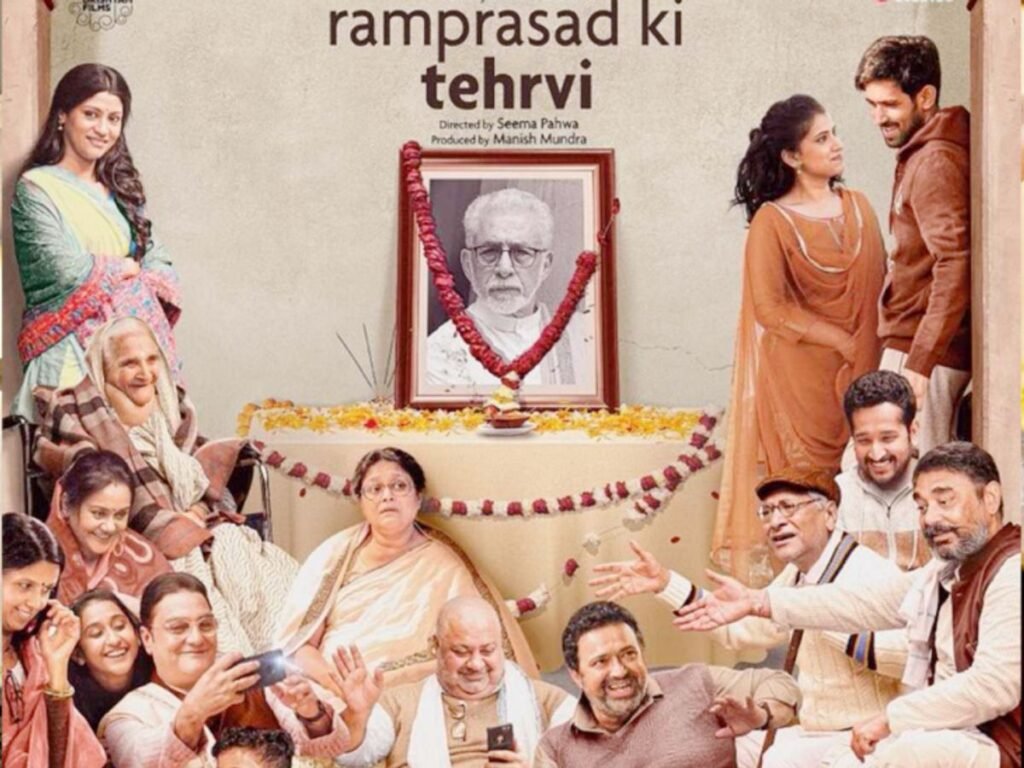
visit now our other review ⚠️🚨⚠️ Kaagaz Movie :Review A True Story of One Man’s Battle

